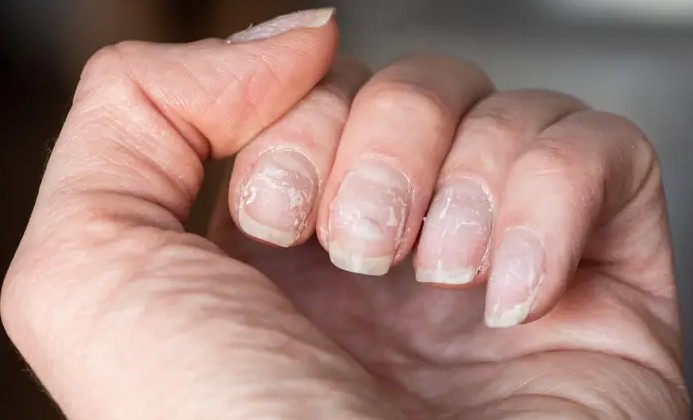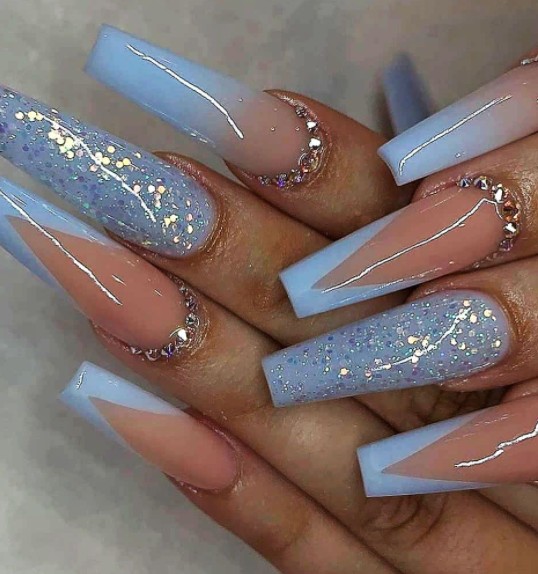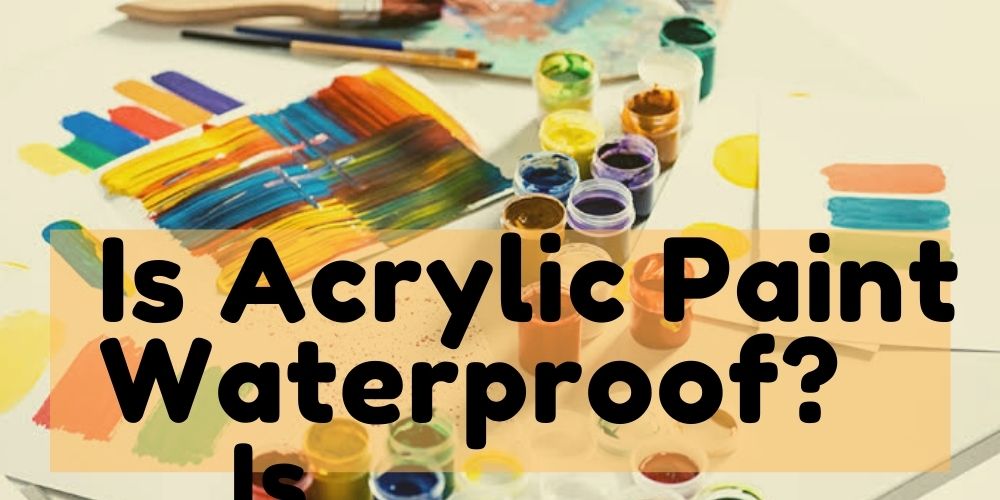Can you use Acrylic paint as nail polish? It is one of the most common questions most people search on the internet. Like nail polish, Acrylic paint is available in various colors and is also quite cheaper when compared to expensive and exclusive nail paint.
With time acrylic paints have only gained popularity. Nowadays people are using it on skin, wood and many other places. The utilities of this paint have increased a lot in last one decade. But is it safe to use acrylic paint on your nails. I will answer that now.

Can You Use Acrylic Paint as Nail Polish?
Yes, You Can!
The short answer to the question is yes; you can use acrylic paints as nail polish but wait, you must have read that acrylic paints are toxic; hence you will have to use the non-toxic version of the acrylic paint to ensure that you don’t destroy your nails.
There are various types of acrylic paints that are available in the market. You should know about all the types.
Different Types of Acrylic Paint?
Generally, there are six types of acrylic paint, they are,
- Soft body acrylic paints.
- Heavy duty acrylic paints.
- Acrylic markets.
- Fluid paints.
- Acrylic Gouache.
- Acrylic inks.
Why is using acrylic paint as nail polish increasing?
Because it’s cool. Isn’t it?
Certainly not. One of the prominent reasons most people love using acrylic paints for nails is that they don’t affect nail growth. Secondly, acrylic paints also last long when compared to conventional nail paints. They are also readily available in various colors, and it doesn’t feel daunting to shop for acrylic paints in the market.
Why is the proper procedure of applying acrylic paint on nails important to know?
It is vital to apply the right acrylic paint on nails to ensure that you don’t affect the nail growth or lead to any other serious health disorder.
Experts suggest applying a fresh coating on nails before using soft acrylic paints. There is no doubt that applying acrylic paint on nails is a fun, cost-friendly, DIY and cozy technique that will definitely make you excited, but there are few things that you will have to consider about acrylic paints.
Today, we will discuss acrylic paints as nail polish and discuss the right procedure and pros and cons of using acrylic paints as nail polish.

Does Acrylic Paint Damage Your Nails?
In most cases it doesn’t.
Generally, using non-toxic acrylic would have zero impact on your fingernails. The non-toxic acrylic paint has ingredients that are expected to be harmless, and it is also easy to apply to remove them from the fingernails.
Using toxic materials can be dangerous as they have the potential of destroying the smooth texture of fingernails. It is highly recommended to use acrylic paints that have water-based solvents as they cause less damage to the fingernails.
Here are some of the expert tips to consider to apply acrylic paint as nail polish safely. You may stop searching for “can you use acrylic paint as nail polish”, and start using it if you really want to.

Step by Step Guide for Painting Your Nails with Acrylic Paints:
- Start by applying a base nail primer for the coat, a clear transparent polish that you must apply before applying nail polish on fingernails.
- Secondly, your nails must be free from oil, and if your nails are dirty, then either clean them with soap and water or use an alcohol-based cleaner to clean your nails.
- Wait for the base coat to completely dry.
- Apply the non toxic acrylic paint for the first coating, and it is recommended to dilute the pain using water.
- You must also not use ordinary nail polish brushes because they don’t have the right quality of hair to spread the coating evenly. At the time of applying the acrylic paint, you can go with a perfect glitter handle nail brush from iBealous made from the right ingredients. It is also strictly prohibited to use acetone as it will affect the bristles of the brush.
- Be patient until the acrylic paint dries.
- Finally, apply the ultimate coating of acrylic paint to your fingernails to shine.
Note: You can also add any nail art if you want after the 5th step for an innovative finish.
What Will Happen If You Apply Non-Toxic Acrylic Paint as Polish?
Acrylic paint is gel or water-based; hence it will easily peel off from the nail if you don’t varnish it with a base coating. Non-toxic acrylic paint dries like a semi-permeable porous layer making it dry and vanish quickly. If you want your nail paint to last long, then you will have to apply a fresh coating for a better and long-lasting finish.
Can You Use Acrylic Paint on Fake or Acrylic Nails?
Yes, you can use acrylic paint on fake or acrylic nails as they have the matching diversity of materials. Acrylic paint also bonds easily with the plastic preset on the fake nails. However, if you want to use acrylic paint, it is suggested to use conventional nail polish to better finish and seal the acrylic paint on the fingernail.
Remember, you have to create a smooth surface on the nail while applying nail artwork.
You can also use various gel-based artificial nails. Similar to fake nails, you will have to also apply nail polish as a coating before applying acrylic paint.
Why Use Coffin Nails For Acrylic Nail Art Work?
Made from high-quality ABS material, which is also environmentally friendly and produces zero toxicity and smell. The fake coffin nails are also a perfect example of DIY art nails great for parties, weddings, family functions, and Christmas parties.
Looking for a professional nail art tool, then go for Morovan Acrylic nail Kit which has a range of tools for manicure lovers.

How long does acrylic paint last on nails?
One of the common doubts for all the people who love acrylic paint is its durability, or how long does it last?
Yes, they are long-lasting, and a fresh coat of acrylic paint can last 6-8 weeks after air drying. It is also important to head to the salon to fill the growth for a better look. Moreover, non-toxic acrylic paint doesn’t have binders, making them more opaque when compared to conventional nail paints.
How to Seal Acrylic Paint on Nails?
There is no doubt that none of us would love to spend money on nail artwork which starts chipping off 2-3 days of application. There are various methods of sealing acrylic paint, but the good news is you can seal it with your best quality nail polish top coat or any kind of hair spray with aerosol present in it.
Just let the acrylic paint dry for a few minutes. After the paint has set on the nail, apply the nail top coat properly and let the top coat dry for at least 6 minutes. Another process is to spray the aerosol hair spray from several inches and dry it so that the paint becomes well sealed on nails.
It is important to seal your acrylic paint because it is water-soluble and will easily chip off. Sealing your nail paint in the right way will also promote healthy nail growth.
Can You Mix Acrylic Paint with Nail Polish?
No, it is not recommended to mix nail polish with acrylic paint because both have different chemical compositions. As they don’t share similar ingredients, mixing them can result in a thick paint that is not optimum for nail points. Whereas you can combine different nail polishes for a texture but don’t mix acrylic paint with nail polish.
How to Get Acrylic Paint Off of Your Nails?
Whether you have spilt acrylic paint on your clothing while working on nail art you want to remove your nail artwork for a different pattern, then here are some of the best ways you can remove your acrylic paint quickly without any expert help.
Also, don’t dispose of acrylic paint in the wash basin to ensure that it stays out of reach of your kids, pets and environment. You can check our article on how to dispose of acrylic paint correctly for that reference.
Frequently Asked Questions (FAQs)
Get your questions answered here:
1. Can you use acrylic paint on gel nails?
Yes, you can paint on gel nails with acrylic paint to extend the manicure or refill the gaps. It is also recommended to use a nail rescuing base coat first before applying acrylic nail paint on gel nails.
2. Can you use acrylic paint on top of regular nail polish?
Yes, you can use acrylic paint on regular nail polish but don’t mix together due to different chemical compositions. You can use conventional white transparent nail polish as a base coat and create artwork using acrylic paint. You can also use a mix of different acrylic paint for custom colours. Also, seal the acrylic paint for a long-lasting finish.
3. Will Acrylic Paint Stain Nails?
Generally, using non-toxic acrylic paint is safe, and it will not harm your fingernails. Moreover, acrylic paint is water-soluble, which makes it quite easy to remove. Also, it would be best if you did not use toxic acrylic paint on nails.
Conclusion:
All in all, if you are thinking, “Can you use acrylic paint as nail polish” the response would be yes, but you must always go with non-toxic acrylic paints. Otherwise you may end up hurting your own nails unintentionally.
However, it is a great innovative design idea to apply acrylic paint as nail polish with a proper nail protective primer or base coat. Prioritize safety and always play it safe when you apply acrylic paint over nails.
Happy nail painting!!



